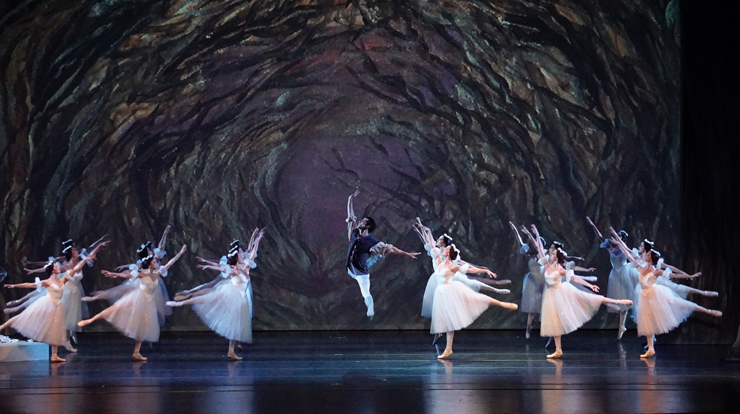
Giselle Act II Jorge Oscar Sanchez & Corps of Ballet.
Photos By Gabriel Gomez & Jacqueline Solorzano.
It is always rewarding to see a full house at a dance performance in Miami. The weekend’s offering, Giselle second act, by the Cuban Classical Ballet of Miami at the Miami Dade County Auditorium, attracted a mostly Cuban audience, plus some young dancers, students, parents and ballet lovers to greet dancers performing for the first time in the United States. The primary purpose of the ten year old CCBM is to showcase recently exiled Cuban principal dancers, as well as those residing in the U.S. in high quality performances of classical repertory. In this performance, the audience saw Amaya Rodriguez, Masiel Alonso and Manuela Navarro who were recently exiled.
The evening opened with a series of pas de deux in a “gala” fashion. First was Spring Waters, the exuberant and free duet that was choreographed for the Bolshoi Ballet by the effusive Asaf Messerer to showcase the strength of the male dancer and the range of dynamics of the female.
Performed by Jorge Oscar Sanchez of the Washington Ballet with Masiel Alonso, the key ele-ments that could have been enhanced in their performance were freedom and exuberance. The technically delivered choreography contained a measure of safety and calculation in a presenta-tion that should be a dazzling whirl of lifts and legs. Enjoyable to watch with its pyro-technique including the well done final one-armed torch lift, Spring Waters is a piece the dancers can grow with and build upon. Live piano accompaniment by Daniel Daroca with rarely heard vocals from soprano Silvya Luduena added an elegant touch.
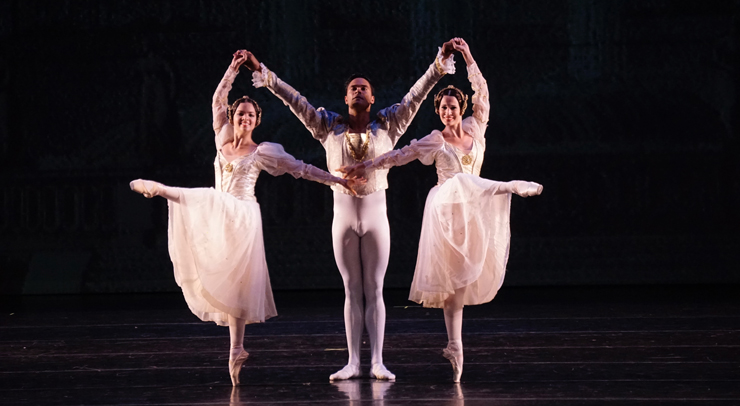
Pas de Trois from Swan lake Masiel Alonso, Ignacio Galindez, Mayrel Martinez.
Photos By Gabriel Gomez & Jacqueline Solorzano.
Romeo and Juliet balcony pas de deux was beautifully executed by two seasoned, mature dancers whose encounter took place against a colorful projection. Having often seen the established choreography of the balcony pas by John Cranko and Kenneth McMillan, this presentation choreographed by Antonio Vargas, who also danced the role of the boyish Romeo, offered an interesting choreographic variation of this familiar Shakespeare story. As Juliet, Marize Fumero was a powerful young woman who knew her mind contrasting the simple ecstasy of her Romeo. This rendition left one wanting to see more dancing from Vargas and to literally see more of Fumero as she climbed a dark staircase to her balcony.
A little foreshadowing was next in the Peasant Pas de Deux from the first act of Giselle. While this sweet frolic is technically difficult to master and chock full of challenging partnering, it mainly appeals to an audience because of the effortless footwork enhancing the playfulness and joy of the couple dancing together. It is flashy in its simplicity. Despite a few bobbles, Manuela Navarro and Sanchez were a charming twosome.
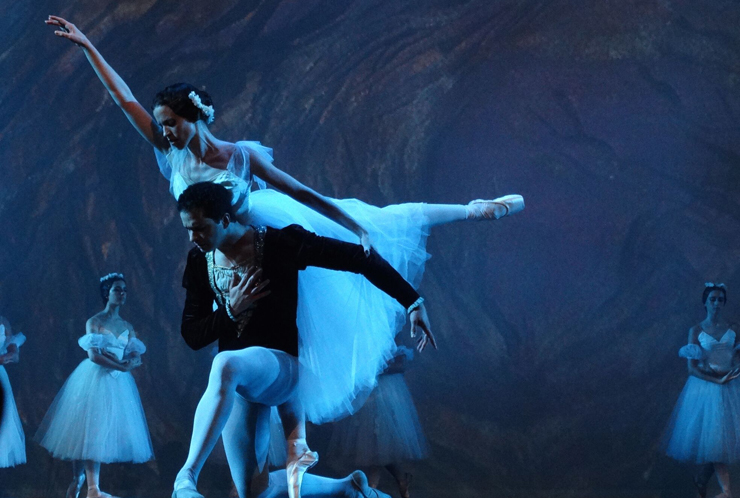
Giselle Amaya Rodriguez & Arionel Vargas.
Photos By Gabriel Gomez & Jacqueline Solorzano.
The well staged and coached Pas de Trois from Swan Lake offered pure classical technique. The elegant divertissement showcased the two newest Cuban exiles partnered with Ignacio Galindez, who came to the U.S. in 2014. Mayrel Martinez exhibited an infectious ease in her dancing.
Alicia Alonzo, the great ballerina and queen of Cuban ballet, was known for her meticulous and artistic portrayal of the infatuated peasant girl, Giselle. Passing her knowledge on to dancers in her company, The National Ballet of Cuba, Giselle is a ballet that Alonzo’s dancers are trained and coached to excel in stylistically and technically. It is with expectation and anticipation that one watches a performance of Giselle by a principal dancer from the National Ballet of Cuba who has garnered that knowledge from Alonzo or her team. In this performance, Amaya Rodriguez was Giselle.
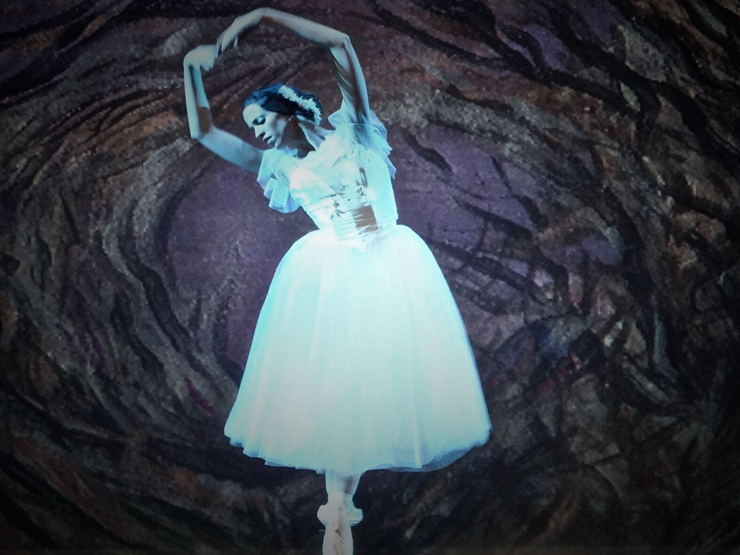
“Giselle” Amaya Rodriguez.
Photos By Gabriel Gomez & Jacqueline Solorzano.
In authentically coaching a role such as Giselle, the challenge is not to lose the soul and breath of dance while bringing out the best possible technical aspects. Rodriguez fell victim to this challenge by displaying well executed technique blended with positions that seemed frozen. The power of transcending love did not adequately come across in her story and her static movements. With that being said, one can be somewhat forgiving in her U.S. premier and look forward to seeing her confidence grow.
Because of injury, Arionel Vargas (scheduled to perform Hilarion) stepped into the lead role of Duke Albrecht, and Jorge Oscar Sanchez delivered his third role of the evening in the portrayal of Hilarion. Vargas was an apt, guilty Albrecht who did a nice job of connecting with and partner-ing Rodriguez. A special moment was their meeting when Albrecht revels in the discovery of the ghostly Giselle, and she comfortably perches in arabesque.
A harsh Fumero was the merciless Queen of the Wilis who bounded across the stage in flying leaps. The two lead Wilis's, Zulma and Moyra, danced by Navarro and Martinez respectively, added another opportunity to see the dancers in roles that contrasted their prior ones and were a good fit. Sanchez was a duly fearful Hilarion.
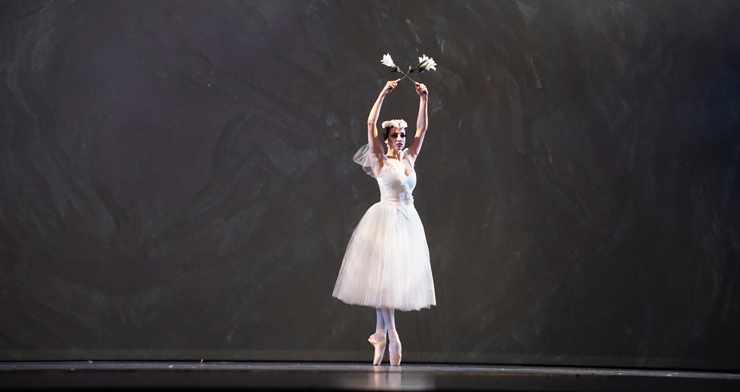
“Giselle” Character Martha Queen of the Willis Ballerina Marize Fumero.
Photos By Gabriel Gomez & Jacqueline Solorzano.
Commendations should be given to the coaching of the corps of Wilis. Local dancers of various strengths and capabilities shared the stage and united to form a cohesive and committed battalion of ghostly broken-hearted spirits.
Dancers bring their well-established Cuban training to the U.S. to find and add other layers to their dance ability. They are seeking, among other things, new choreography, more expansion, breath, unexplored movement and ideas. Blending the old with the new to discover what is exciting and stimulating will always be desired and will encourage forward thinking.




